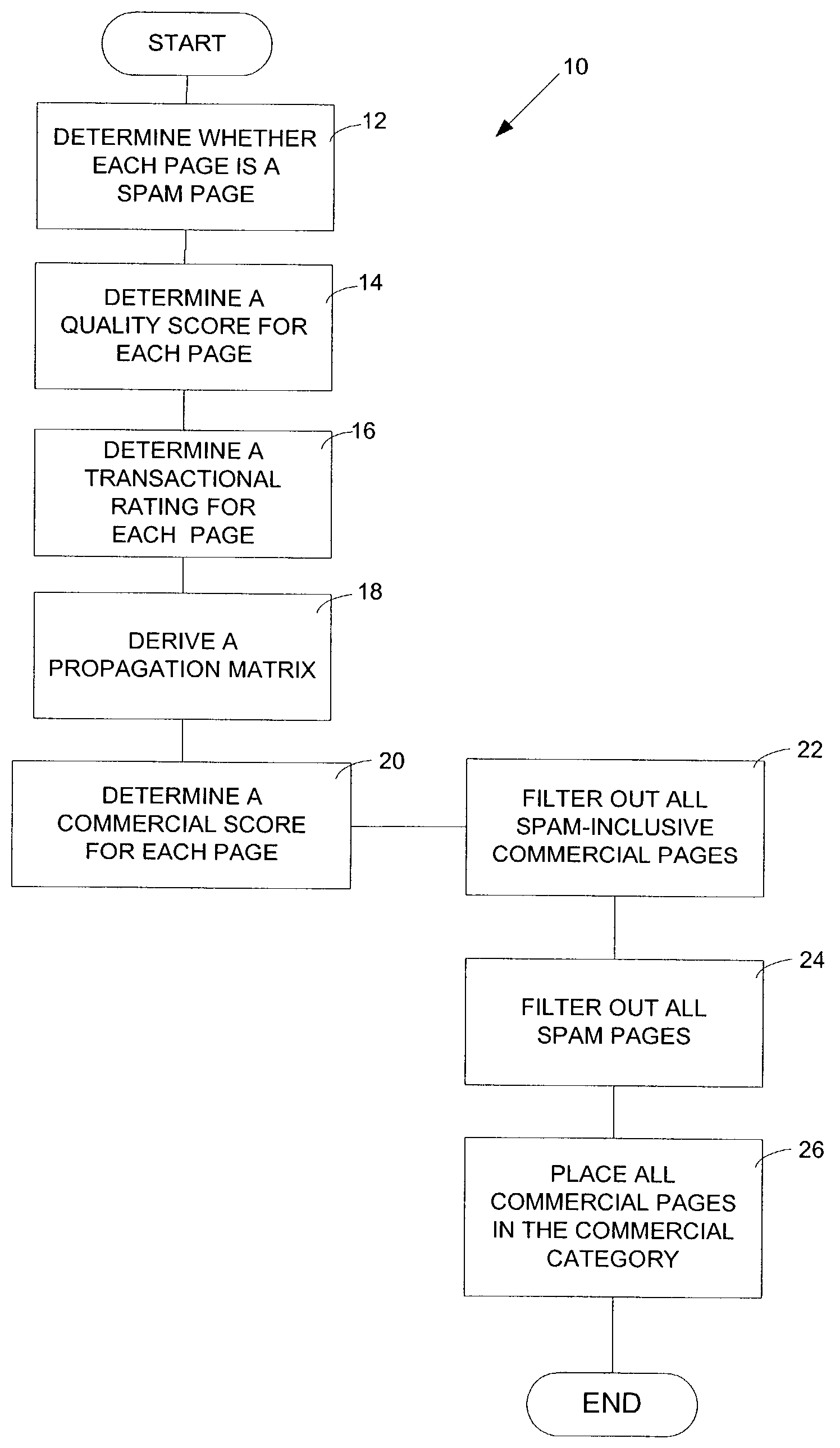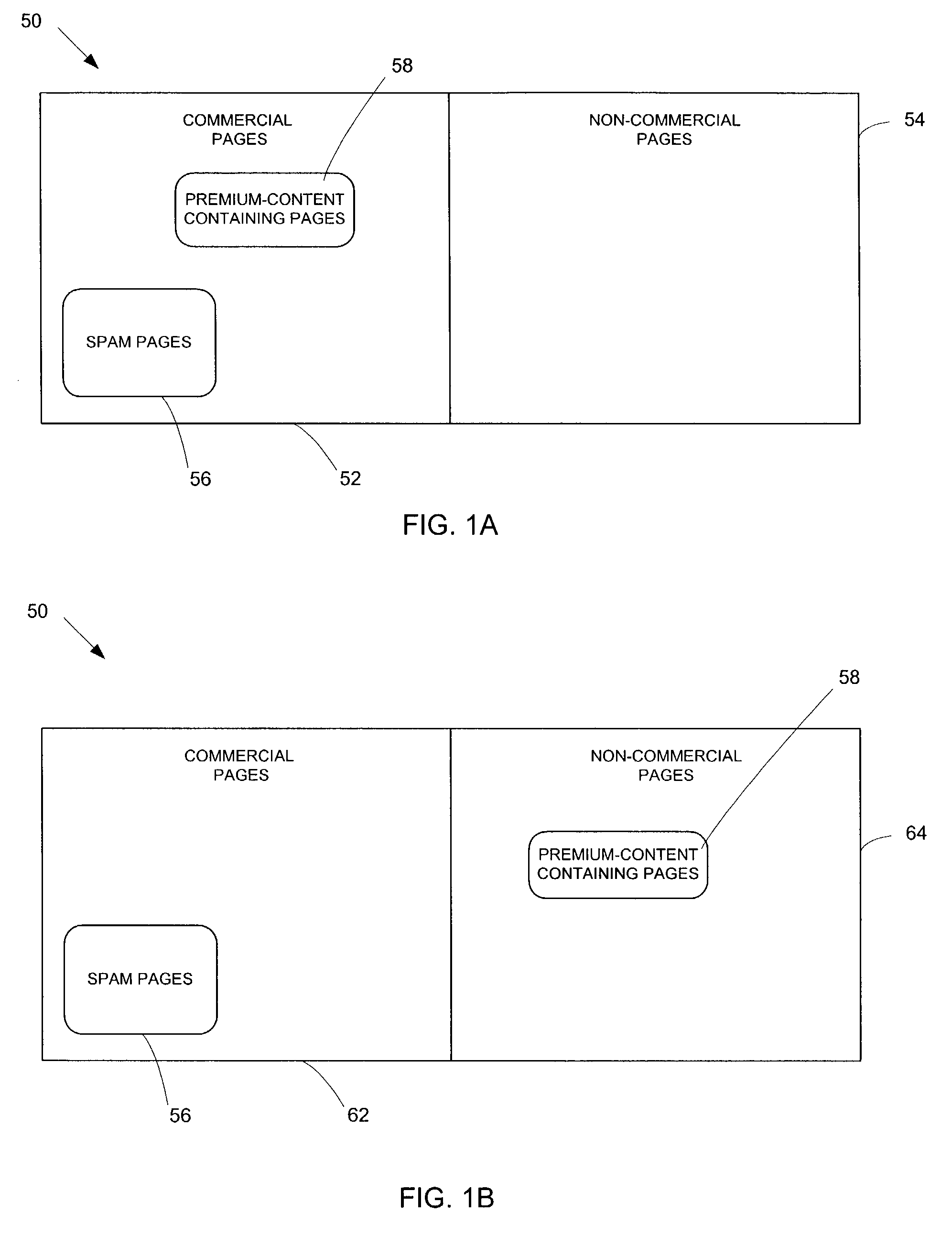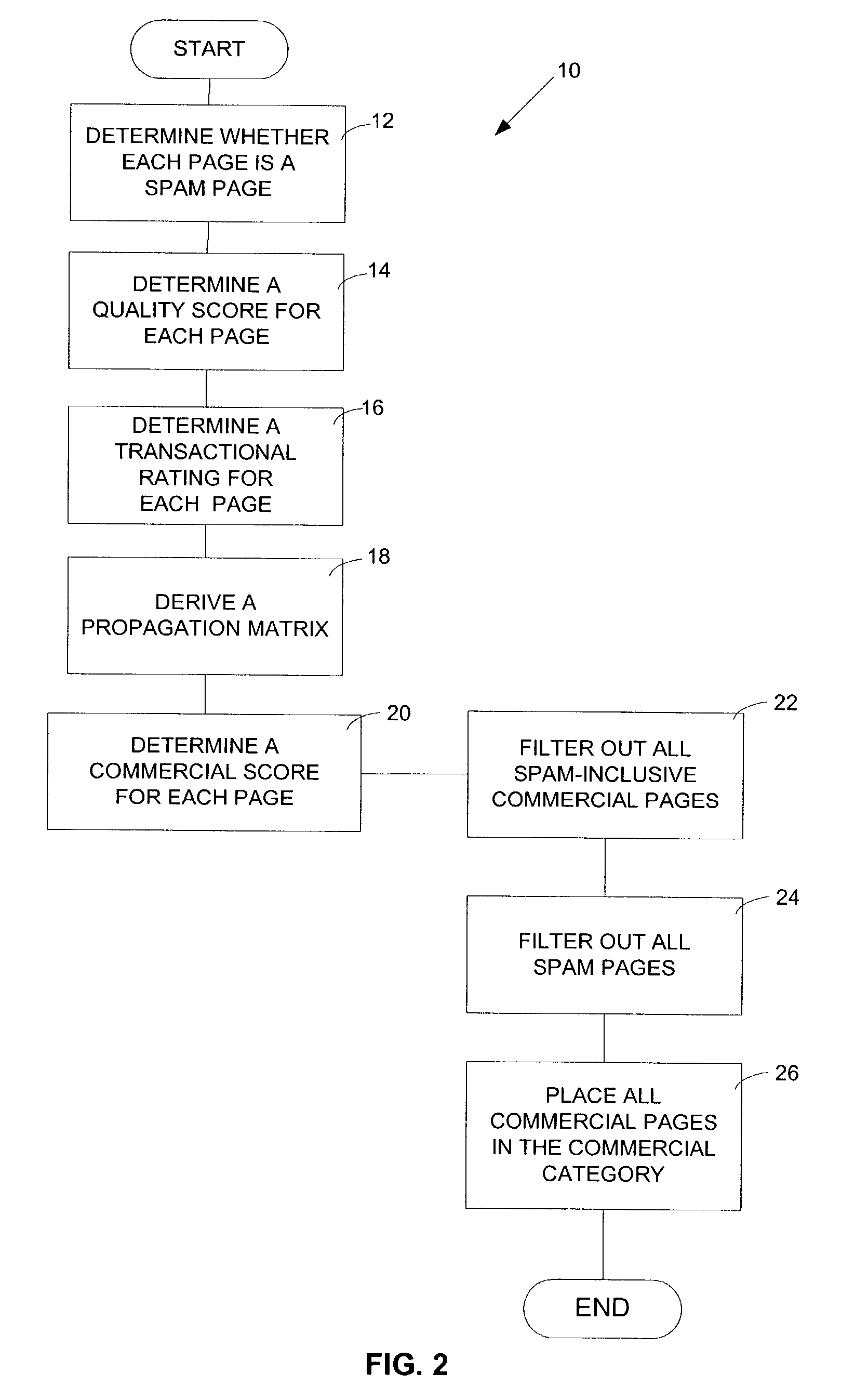Method and apparatus for categorizing and presenting documents of a distributed database
a distributed database and document technology, applied in the field of method and apparatus for categorizing and presenting documents of distributed databases, can solve the problems of inability to provide relevant search, increase the difficulty of providing relevant search, and not provide a bottom-up, customizable categorization, and the effect of not being able to provide the bottom-up of known search engines
- Summary
- Abstract
- Description
- Claims
- Application Information
AI Technical Summary
Benefits of technology
Problems solved by technology
Method used
Image
Examples
Embodiment Construction
[0045]Described herein is a method and apparatus for identifying documents in a distributed database. One embodiment comprises a heuristic for identifying pages that are commercial in nature and providing a system and method for the dynamic categorization and presentation of both commercial pages and informational pages in real-time to an advertiser, search engine provider or user. This system may be used in any context where it is useful to categorize search results based upon the commercial nature of those pages, and can be utilized in a multitude of forms from a browser plug-in to a stand-alone application to a back-end search-engine or search engine tool. In addition, the system can be used to provide unique operational benefits to a pay for performance search engine provider by automating a portion of the sales cycle and enabling a collaborative account management environment between advertisers and a the pay for performance search engine provider.
[0046]Distinct sets of search ...
PUM
 Login to View More
Login to View More Abstract
Description
Claims
Application Information
 Login to View More
Login to View More - R&D
- Intellectual Property
- Life Sciences
- Materials
- Tech Scout
- Unparalleled Data Quality
- Higher Quality Content
- 60% Fewer Hallucinations
Browse by: Latest US Patents, China's latest patents, Technical Efficacy Thesaurus, Application Domain, Technology Topic, Popular Technical Reports.
© 2025 PatSnap. All rights reserved.Legal|Privacy policy|Modern Slavery Act Transparency Statement|Sitemap|About US| Contact US: help@patsnap.com



